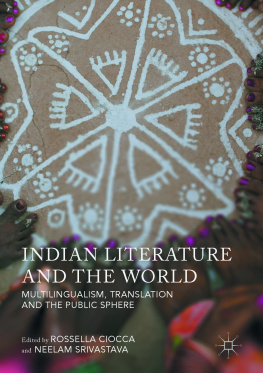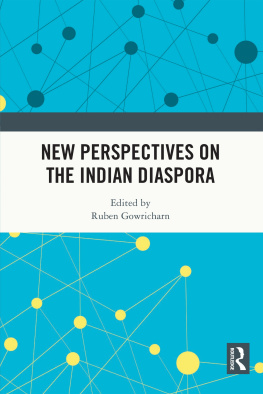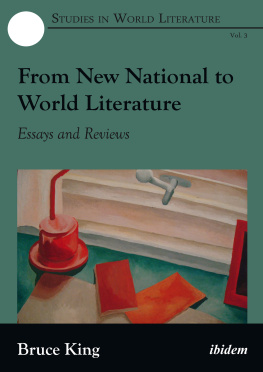In what follows, we propose a working model of contemporary Indian literature characterized by four features: firstly, it is multilingual, hence our volume draws on the specific linguistic expertise of scholars whose work is included in the collection; secondly, it is translational, so we consider the process and politics of translation as central to the construction of a pan-Indian canon (also through the contribution of contemporary publishing practices); thirdly, it is comparative, because it is necessary to conceive of Indian literatures in the plural while arguing for the importance of comparing these literatures with each other as a way forward for scholarship; fourthly, it is a simultaneously located and internationalist literature, which we understand as being premised on a multilingual literary sphere in which translation plays a prominent role. Rather than attempting to approximate Indian literature to the fashionable centreperiphery model adopted by critics who have used world-systems theory to restructure the modern literary field, we look at its enduring engagement with the public sphere and with political resistance through a variety of narrative and poetic forms which defy any categorization within a singular model of literary modernism and which emanate from the capitalist centres and are reappropriated by the peripheries ( pace WReC,
Beyond the Postcolonial
The purview of postcolonial studies has mainly focused on the contours of writing in English or in the other ex-colonial languages, beginning with Ashcroft, Griffiths, and Tiffins seminal definition of the field in ).
Particularly in India, the founding idea of a postcolonial literature was historically built around a primarily Anglophone canon of texts. It may be worth recalling, once again, Salman Rushdies blithe pronouncement regarding a supposed hierarchy between Indian prose writing in English and in the vernacular languages post-1947: the former, he claimed,
is proving to be a stronger and more important body of work than most of what has been produced in the 16 official languages of India, the so-called vernacular languages [] Indo-Anglian literature represents perhaps the most valuable contribution India has yet made to the world of books. (Rushdie : x).
This book is our counterargument to Rushdies statement. Given Indias myriad cultural and linguistic varieties, it is all the more imperative to open up critical approaches to a wider and much more multilingual survey of contemporary writing from the subcontinent. There is still a sharp divide between the study of South Asian languages and literatures and postcolonial literary studies, and even more so between these and the field of world literary studies. The study of postcolonial Indian literature tends to imply a mostly Anglophone focus, because it is mainly situated in English Literature departments, whence postcolonial studies first originated (though the term post-colonial was initially used as a historical marker for nations and regions that had undergone the decolonization process). Moreover, what might be called the teaching canon of postcolonial Indian literature rarely includes Indian literature in English translation, and only considers a small body of texts written in English. Thus postcolonial literature, especially as shaped by university syllabi and degree course specifications, has tended to produce a monolingual canon. This focus has restricted the genres usefulness for exploring the multicultural and polyglot context of literary production in postcolonial South Asia, as well as fostering a schizophrenic view of Indian literature as divided between literature in the bhashas (Indian indigenous languages) and literature produced in English. Scholars have called for the development of a different model of scholarship in order to understand how to approach this complex field, which has been strangely bisected into Asian languages/South Asian area studies disciplinary approaches on the one hand, and postcolonial studies approaches on the other, with little communication between the two.
Indeed, Neil Lazarus has criticized not only the linguistic scope of postcolonial reading canons but the very substance of their critical agenda, lamenting the fact that very often the same questions tend to be asked, the same methods used, the same concepts mobilized ( One of our aims is to recuperate a linguistic competence more strictly conversant with Indian literary production, and which has historically belonged to area studies, a field that has been perhaps too hastily dismissed in metropolitan academic circles as constitutively Orientalist. The aim of refocusing our attention on linguistic expertise is not meant to exclude English, but to assess its relative importance in the multilingual spectrum of India.
In short, we are convinced that literature can and should be studied with close attention to original languages and contexts, and thus we deem particularly welcome contributions offered from a wider range of area expertise and linguistic knowledge, and which combine the urge to contextualize, typical of postcolonial approaches, with a more direct field experience guaranteed by specialisms.
The Question of Multilingualism in India
As Rita Kothari and Judy Wakabayashi remark:
Indians moved within a multilingual structure, not necessarily thinking of these languages as different languages, but rather as different registers of the same language, each with a specific taskalmost as if languages had their own caste system and were assigned different jobs. In India, moving from one language or dialect to another did not seem to constitute an act of translation, but merely a confirmation of a multilingual world not overtly conscious of its own multilingualism. (: 1213).









